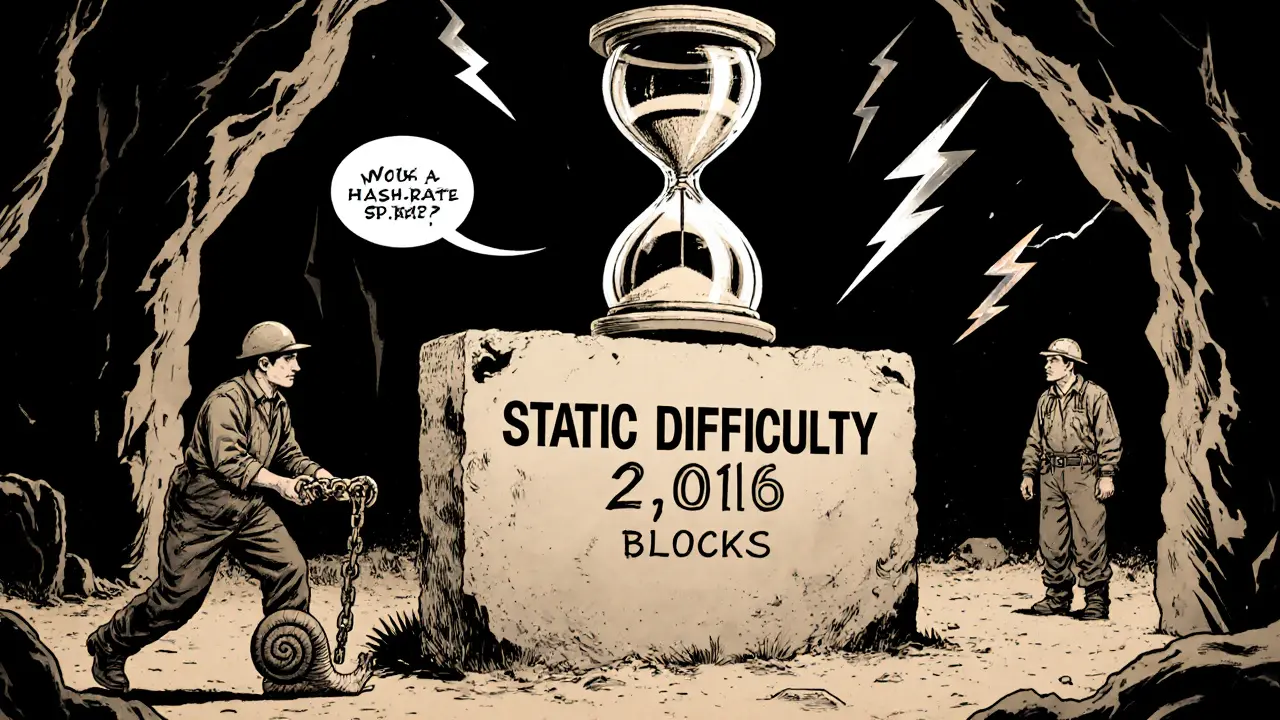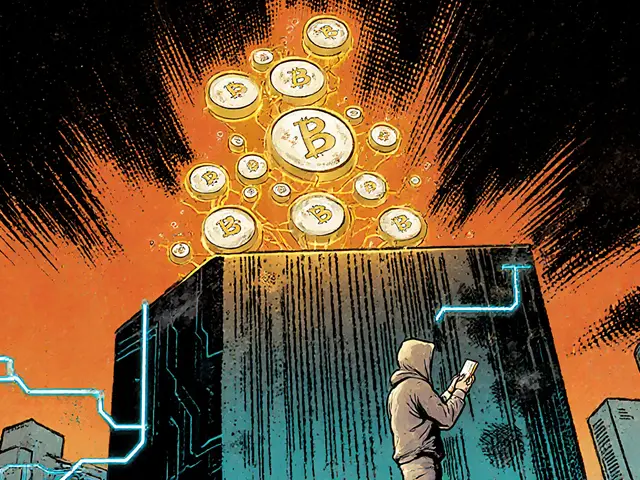Adaptive Mining Difficulty: How It Works and Why It Matters
When working with Adaptive Mining Difficulty, the automated system that changes mining difficulty based on network conditions like hash rate and block times. Also known as dynamic difficulty, it ensures that the network can keep producing blocks at a predictable pace while staying secure.
To see why this matters, start with Hash Rate, the total computational power miners contribute to solving proof‑of‑work puzzles. When hash rate spikes, miners solve puzzles faster, which would shrink block time if difficulty stayed flat. Adaptive Mining Difficulty steps in, using the Difficulty Adjustment Algorithm, the formula that recalibrates mining difficulty every set number of blocks to push the challenge back up. This keeps the Block Time, the average interval between the creation of new blocks close to its target, usually ten minutes for Bitcoin. At the same time, Proof‑of‑Work, the consensus mechanism that requires miners to solve cryptographic puzzles remains robust because the puzzle difficulty adapts to the amount of work being done. In short, adaptive mining difficulty encompasses hash rate fluctuations, proof‑of‑work security, and block time stability.
How Adaptive Difficulty Keeps the Network Healthy
Think of the network as a treadmill that must stay at a constant speed. If more runners (hash rate) join, the treadmill speeds up unless you raise the incline (difficulty). The difficulty adjustment algorithm influences mining profitability, ensuring that no sudden surge of hash rate can flood the system with blocks. Conversely, if many miners drop off, the algorithm lowers the difficulty so that blocks don’t take forever to appear, preserving transaction throughput and fee market dynamics. This push‑pull relationship means that miners can plan hardware investments with clearer expectations, while users enjoy steady confirmation times. The system also guards against attacks; a sudden spike in hash rate from an adversary would be neutralized by a rapid difficulty increase, making it expensive to control the chain.
Below you’ll find a curated list of articles that dig deeper into each of these pieces. Whether you’re curious about the math behind hash rate’s impact, want step‑by‑step guides on mining hardware, or need to understand how the latest Bitcoin upgrades tweak the difficulty algorithm, the collection covers practical tips, real‑world examples, and forward‑looking analysis. Dive in to see how adaptive mining difficulty shapes today’s blockchain landscape and what it could mean for the next generation of proof‑of‑work networks.






